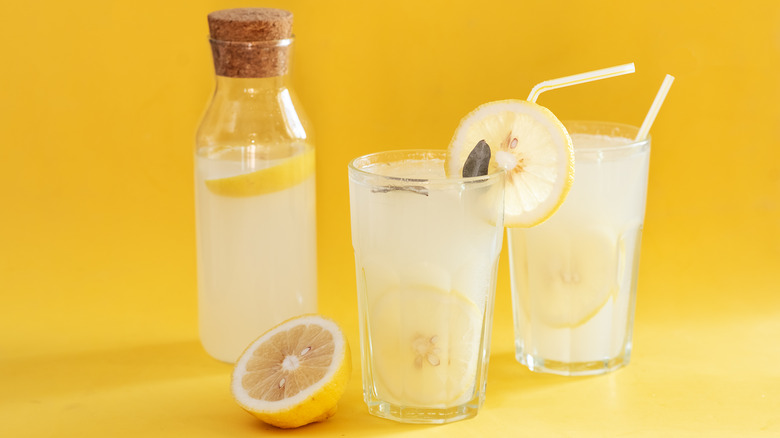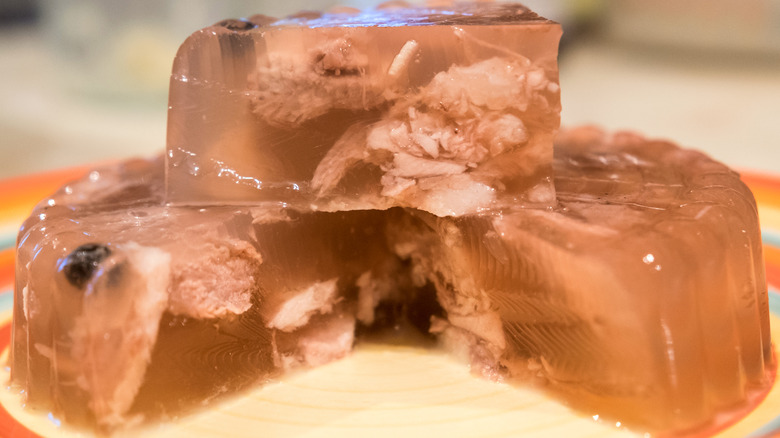The Vintage Lemonade Recipe With An Unexpectedly Meaty Ingredient
Plain lemonade made with nothing more than sugar, lemon juice, and water is always perfectly delicious, but it's also fun to dress it up a bit. You can go for a floral upgrade by adding lavender, for example. Or, if you'd rather, you could spice things up with chopped green chiles — or even take a tip from a 1944 recipe and incorporate lemon zest. One vintage recipe that you might not want to emulate, however, comes from an 1827 booklet titled "Oxford Night Caps." It recommends making lemonade with a beefy ingredient known as calf foot jelly.
This lemonade is actually a booze-free, extra-lemony version of a drink known as egg punch, and yes, it contains eggs, too — 10 of them. Aside from calf foot jelly, the other ingredients include lemons, sugar, water, and capillaire, which is a simple syrup made with maidenhair fern or orange flower water. The original egg punch recipe calls for oranges, brandy, sherry, and orange shrub, which is a brandy or rum-based cordial. The booklet helpfully notes that the lemonade version of egg punch can be converted into an equally beefy orangeade by swapping one type of citrus fruit for another.
What is calf foot jelly?
Calf foot jelly, while typically not used to make lemonade, was a fairly common ingredient back in the 19th century. It was comprised of — you guessed it — boiled calves' feet. Or rather, the gelatinous substance they produced. Some recipes also used deer antlers, and the wife of the famous thinker William Penn made something similar with antlers and ivory in the 1600s. Another recipe dating from the 18th century doesn't use deer antlers, but clarifies the jelly with eggshells and beaten egg whites.
Calf foot jelly was essentially the plain, unflavored gelatin of its day. It could be used in savory dishes such as the Ashkenazi aspic called petchah, which was also made with boiled eggs, onions, and carrots. Alternatively, it was featured in sweet dishes like flummery or blancmange, which also used sugared almond milk or eggs and wine. (Today's blancmange is nothing to be afraid of, since it doesn't contain any boiled animal feet.)
Calf foot jelly survived into the 20th century, even when store-bought gelatin capsules were becoming available, since it was thought of as an easy(ish) way to get protein into sick people. As it turns out, the protein is low-quality, as it lacks the essential amino acid tryptophan — but it may still be more nutritious than the fruit-flavored Jell-O served to today's hospital patients.

